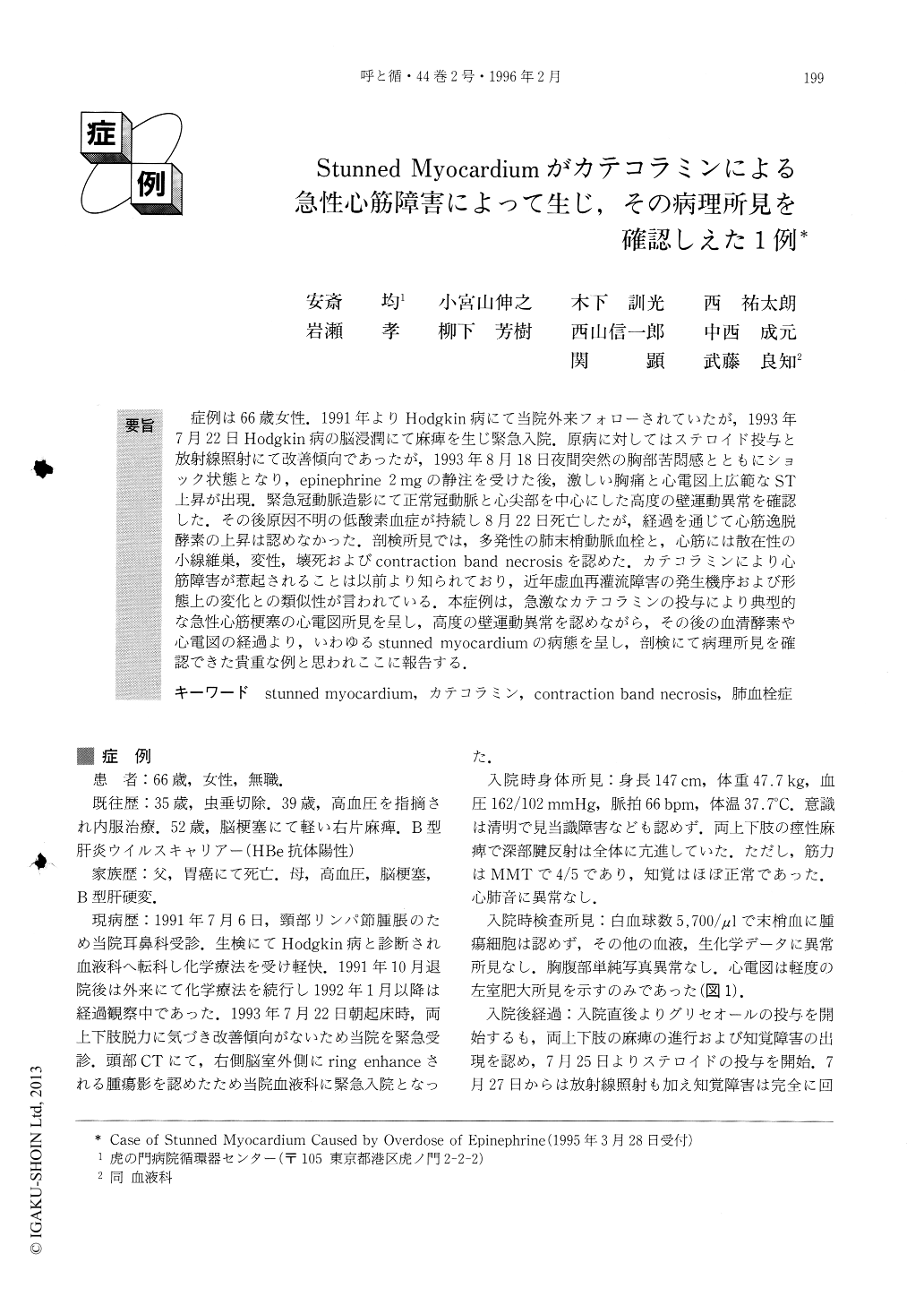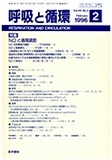Japanese
English
- 有料閲覧
- Abstract 文献概要
- 1ページ目 Look Inside
症例は66歳女性.1991年よりHodgkin病にて当院外来フォローされていたが,1993年7月22日Hodgkin病の脳浸潤にて麻痺を生じ緊急入院.原病に対してはステロイド投与と放射線照射にて改善傾向であったが,1993年8月18日夜間突然の胸部苦悶感とともにショック状態となり,epinephrine 2 mgの静注を受けた後,激しい胸痛と心電図上広範なST上昇が出現.緊急冠動脈造影にて正常冠動脈と心尖部を中心にした高度の壁運動異常を確認した.その後原因不明の低酸素血症が持続し8月22日死亡したが,経過を通じて心筋逸脱酵素の上昇は認めなかった.剖検所見では,多発性の肺末梢動脈血栓と,心筋には散在性の小線維巣,変性,壊死およびcontraction band necrosisを認めた。カテコラミンにより心筋障害が惹起されることは以前より知られており,近年虚血再灌流障害の発生機序および形態上の変化との類似性が言われている.本症例は,急激なカテコラミンの投与により典型的な急性心筋梗塞の心電図所見を呈し,高度の壁運動異常を認めながら,その後の血清酵素や心電図の経過より,いわゆるstunned myocardiumの病態を呈し,剖検にて病理所見を確認できた貴重な例と思われここに報告する.
We present the first known case of stunned myocar-dium due to an overdose of epinephrine, as indicated byclinical and autopsy findings. A 66-year-old woman, who had been followed up for Hodgkin's disease since 1991. was admitted to our hospital on July 22nd, 1993. with tetraplegia due to brain metastasis. Corticosteroid was administered and radiation therapy was delivered to the brain with a resultant lessening of severe brain edema and reduction of paralysis.
On August 18th, she developed severe dyspnea and chest discomfort and her blood pressure declined. A physician then erroneously administered 2mg of epine-phrine intravenously. The patient then complained of severe chest pain. The ECG revealed ST segment elevation resembling an acute myocardial infarction, and an emergency coronary angiogram was performed. While the coronary arteries lacked signs of stenosis that would explain the ECG abnormality, the left ventriculo-gram revealed an extensive wall abnormality unrelated to distribution in coronary circulation. Surprisingly, there was no subsequent elevation of cardiac enzymes. We considered the diagnosis to be a “stunned myocar-dium”. Thereafter, the patient developed unexplained severe, persistent hypoxia and died 3 days later.
Autopsy revealed extensive microthrombi in a small pulmonary artery that had caused the hypoxia and subsequent death. Pathologic examination demonstrat-ed the presence of sporadic and focal fibrosis and ne-crosis in the myocardium. Contraction band necrosis was also present.
Catecholamines can produce myocardial damage. It was recently suggested that the pathophysiological changes associated with reperfusion injury resemble those of catecholamine-induced damage.
We therefore believe this patient developed a stunned myocardium due to catecholamine-induced myocardial damage, as evidenced by the pathological findings at autopsy.

Copyright © 1996, Igaku-Shoin Ltd. All rights reserved.


